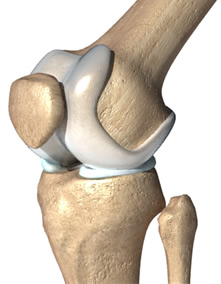Anterior Knee Pain



Some of you may of had the misfortune to have been suffering with anterior knee pain during the coronavirus lockdown period.
As we slowly transition to a "new normal", some physiotherapy and osteopathy clinics are now open again, including the Lloyd’s Wellbeing Centre. However, those of you who are still working from home may find it difficult to access treatment clinics, or may be 'shielding' and unable to do so. With that in mind, I have suggested some activities and exercises which may help you to self-manage this painful knee condition.
 Written by Daniele Delicati, physiotherapist at the Lloyd’s Wellbeing Centre
Written by Daniele Delicati, physiotherapist at the Lloyd’s Wellbeing Centre
 Anterior knee pain (AKP), also known as patellofemoral pain syndrome, is pain that occurs at the front and centre of the knee. It represents the second most common complaint for individuals presenting to physiotherapy/osteopathy clinics, after back pain.
AKP is described as pain arising from the anterior or retro-patellar knee region which tends to be exacerbated by activities such as running, stair ambulation, hopping and jumping. Studies report a high incidence in active populations, with women, and especially young women, being affected more than men. The degree of pain experienced with this condition can influence short and long-term outcomes, so it is helpful if you are able to consult a clinician early-on to begin treatment and self-help guidance.
A multimodal physiotherapy treatment approach can significantly reduce AKP. This includes manual therapy, acupuncture, taping, and exercise therapy.
Anterior knee pain (AKP), also known as patellofemoral pain syndrome, is pain that occurs at the front and centre of the knee. It represents the second most common complaint for individuals presenting to physiotherapy/osteopathy clinics, after back pain.
AKP is described as pain arising from the anterior or retro-patellar knee region which tends to be exacerbated by activities such as running, stair ambulation, hopping and jumping. Studies report a high incidence in active populations, with women, and especially young women, being affected more than men. The degree of pain experienced with this condition can influence short and long-term outcomes, so it is helpful if you are able to consult a clinician early-on to begin treatment and self-help guidance.
A multimodal physiotherapy treatment approach can significantly reduce AKP. This includes manual therapy, acupuncture, taping, and exercise therapy.

As a general principle, the stronger your knee muscles, the less stressors there will be in the patellofemoral joint. Squatting, stepping, or lunging exercises are my favourite, and they are particularly useful to improve patella tracking when there is a patella misalignment underpinning the pain.
Abnormal hip joint movements are associated with AKP as weak gluteal muscles are observed in people with this problem. This seems to promote knee valgus, which is when your knee collapses inward, during single leg bending activities. Knee valgus has a significant impact on AKP because it increases patellofemoral joint stress, and therefore pain. Perform gluteal muscle strengthening exercises to improve the alignment of the hip, knee, and ankle joints when you move your legs, which in turn will decrease patellar stressors and pain.
Some good example exercises are the single leg bridge, side plank, and clamshell. Examples of these exercises can be found on the internet. For strength development, you will need to carry out for each knee and hip exercise, at least 3 sets of 8 to 12 repetitions, 3 times a week and rest about 2 minutes in between each set.
 Written by Daniele Delicati, physiotherapist at the Lloyd’s Wellbeing Centre
Written by Daniele Delicati, physiotherapist at the Lloyd’s Wellbeing Centre
What is anterior knee pain?
 Anterior knee pain (AKP), also known as patellofemoral pain syndrome, is pain that occurs at the front and centre of the knee. It represents the second most common complaint for individuals presenting to physiotherapy/osteopathy clinics, after back pain.
AKP is described as pain arising from the anterior or retro-patellar knee region which tends to be exacerbated by activities such as running, stair ambulation, hopping and jumping. Studies report a high incidence in active populations, with women, and especially young women, being affected more than men. The degree of pain experienced with this condition can influence short and long-term outcomes, so it is helpful if you are able to consult a clinician early-on to begin treatment and self-help guidance.
A multimodal physiotherapy treatment approach can significantly reduce AKP. This includes manual therapy, acupuncture, taping, and exercise therapy.
Anterior knee pain (AKP), also known as patellofemoral pain syndrome, is pain that occurs at the front and centre of the knee. It represents the second most common complaint for individuals presenting to physiotherapy/osteopathy clinics, after back pain.
AKP is described as pain arising from the anterior or retro-patellar knee region which tends to be exacerbated by activities such as running, stair ambulation, hopping and jumping. Studies report a high incidence in active populations, with women, and especially young women, being affected more than men. The degree of pain experienced with this condition can influence short and long-term outcomes, so it is helpful if you are able to consult a clinician early-on to begin treatment and self-help guidance.
A multimodal physiotherapy treatment approach can significantly reduce AKP. This includes manual therapy, acupuncture, taping, and exercise therapy.
Exercises for anterior knee pain

1. Try regular low-resistance cycling
It is believed that the articular cartilage of the knee is often involved in the onset of pain (early degenerative cartilage changes can be observed during MRI scans in people with anterior knee pain). Additionally, the cartilage is avascular (meaning it does not have a blood supply), so massage or heat will not have any therapeutic effect. However, performing low-resistance cycling can help stimulating the cartilage cells to reproduce, which will help prevent further degeneration and pain. 2. Perform knee strengthening exercises
2. Perform knee strengthening exercises
As a general principle, the stronger your knee muscles, the less stressors there will be in the patellofemoral joint. Squatting, stepping, or lunging exercises are my favourite, and they are particularly useful to improve patella tracking when there is a patella misalignment underpinning the pain.
 3. Perform gluteal muscle strengthening
3. Perform gluteal muscle strengthening
Abnormal hip joint movements are associated with AKP as weak gluteal muscles are observed in people with this problem. This seems to promote knee valgus, which is when your knee collapses inward, during single leg bending activities. Knee valgus has a significant impact on AKP because it increases patellofemoral joint stress, and therefore pain. Perform gluteal muscle strengthening exercises to improve the alignment of the hip, knee, and ankle joints when you move your legs, which in turn will decrease patellar stressors and pain.
Some good example exercises are the single leg bridge, side plank, and clamshell. Examples of these exercises can be found on the internet. For strength development, you will need to carry out for each knee and hip exercise, at least 3 sets of 8 to 12 repetitions, 3 times a week and rest about 2 minutes in between each set.
Would you like to see a physiotherapist or osteopath? The Lloyd's Wellbeing Centre is open.
If you're experiencing anterior knee pain then our practitioners can help. We are open for both in-person and remote appointments.Check availability and book an appointment onlineCategories


